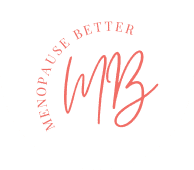Paleo vs Keto Diet: Which Can Work Best for You?
Keto and paleo are two of the most popular weight-loss diets. Both diets have shown good results, but there are also some drawbacks to both.
Table of Contents
ToggleLet’s dive into the similarities and differences between the two diets to determine which suits your goals and lifestyle best.
What Is the Keto Diet?

The ketogenic (or keto) diet differs from other low-carb diets because of its high-fat content and moderate protein intake.
The macronutrients in a keto diet break down as follows:
- fats- 70-80%
- proteins- 10-20%
- carbohydrates- 5-10%
Compared to a regular diet, the distribution of macronutrients is significantly in favor of fat and extremely low in carbohydrates.
This very low-carbohydrate diet forces the body to enter a metabolic state called ketosis, in which fat is burned for energy instead of carbohydrates. This process causes the liver to create a type of chemical used to break down fat called ketones. The body can use these ketones for fuel.
In order to get the best result from this diet, it’s important to achieve ketosis.
What Foods Can You Eat on the Keto Diet?
| Meat | Beef, chicken, turkey, veal, buffalo, venison, lamb, pork, etc |
| Cured meats | Bacon, sausage, ham, and other deli meats |
| Fish and seafood | Salmon, tuna, trout, mackerel, shrimp, scallops, octopus, calamari, etc |
| Eggs | Eggs |
| Dairy products | Ghee, butter, cream, cream cheese, plain Greek yogurt, plain yogurt, feta, brie, parmesan, ricotta, blue cheese, Colby, Swiss, and other unprocessed cheeses |
| Acceptable fats | Coconut oil, olive oil, grape-seed oil, avocado oil, avocados, sesame oil, butter, and bacon fat |
| Nuts and seeds | Almonds, Brazil nuts, walnuts, flaxseeds, pumpkin seeds, pecans, macadamia nuts, pistachios, walnuts, flaxseeds, sunflower seeds, sesame seeds, chia, and nut butter without added sugars |
| Vegetables | All non-starchy vegetables, including all types of lettuce, spinach, arugula, asparagus, green beans, broccoli, cauliflower, mushrooms, tomatoes, onions, peppers, cucumber, artichokes, radicchio, brussels sprouts, zucchini, scallions, shallots, okra, celery, and tomato sauce without added sugars |
| Fruits | Lemons, limes, strawberries, blueberries, blackberries, and raspberries |
| Condiments | Salt, pepper, herbs, mustard, mayonnaise, apple cider vinegar, and spices |
| Drinks | Water and unsweetened coffee and tea |
What Foods Do You Need to Avoid on the Ketogenic Diet?
The most important aspect of following this eating program is to meet the macronutrient goals. In order to reach ketosis, sugar and carbohydrate consumption must be limited.
| Sugary foods | Cookies, ice cream, cake, candy, jam, jelly, and other preserves with added sugar, canned fruit packed in sugar, pastries, donuts, milkshakes, and most ready-to-eat cereals |
| Sugary beverages | Soda, energy drinks, fruit juice, etc |
| Grains | Bread, rice, pasta, cereal, and all types of grains |
| Fruits | All except lemons, limes and berries in moderation |
| Beans and legumes | Black beans, kidney beans, lentils, peas, chickpeas, and all other beans and legumes |
| Root vegetables | Potatoes, malanga, sweet potatoes, carrots, and other root vegetables |
| Condiments with added sugar | Barbecue sauce, ketchup, honey mustard, teriyaki sauce, etc |
| Snacks | Chips and crackers |
| Alcohol | Beer, wine, mixed drinks |
Keto Diet Sample Meal Plan
- Breakfast: Vegetable omelet served with avocado slices
- Lunch: Grilled Salmon with salad
- Dinner: Chicken lettuce wraps
- Snack: veggie sticks and almond butter
Alcohol in Keto
Even on a keto diet, there are plenty of low-carb alcoholic beverages to enjoy in moderation.
Pure forms of alcohol like gin, tequila, rum, whiskey, and vodka are free of carbs and therefore allowed in this diet. These beverages can be consumed alone or combined with low-carb mixers for added flavor.

Keto-friendly mixers include seltzer, sugar-free tonic water, diet soda, and Crystal Light drink mix. Moderation is still key when consuming alcohol in its pure form or with keto-friendly mixers to avoid other adverse health effects.
Alcoholic beverages to avoid on the keto diet include margaritas, bloody Mary, sangria, piña colada, and regular beer.
What Is the Paleo Diet?

The paleo diet is also sometimes referred to as the “caveman diet” because it focuses on eating foods that humans ate during the Paleolithic era. Therefore, you will have to eliminate all modern-day processed foods.
Paleo dieters must also remove grains, beans, and legumes from their meals. This diet plan is high in meat and fish, mimicking the diet of the hunter-gatherer era.
Paleo followers usually focus on more than just a diet. It’s usually seen as a way to improve lifestyle practices, saving the environment and promoting overall well-being.
There are high standards for the quality of foods you select on the paleo diet. The animals from which the protein meats are derived should be grass-fed, and ingredients should preferably be organic.
Rules for Eating on the Paleo Diet
- Eat real, unprocessed foods
- Emphasize eating protein and fat
- Limit carbohydrates
- Eat plenty of vegetables
- Minimize sugar intake
- Eat low-glycemic index fruits such as berries
- Choose meat from grass-fed, organic, and pasture-raised animals
- If possible, choose organic produce
- Avoid whole grains and legumes to reduce inflammation in the body
What Foods Can You Eat on the Paleo Diet?
| Lean protein | Chicken, turkey, pork, beef, veal, bison, eggs, and other lean proteins. Grass-fed preferred |
| Healthy fats | Coconut oil, olive oil, grape-seed oil, avocado oil, avocados, sesame oil, and ghee |
| Fish and seafood | All types of fish and seafood, but favoring fish high in Omega-3, such as salmon |
| Nuts and seeds | Almonds, Brazil nuts, walnuts, flaxseeds, pumpkin seeds, pecans, macadamia nuts, pistachios, walnuts, flaxseeds, sunflower seeds, sesame seeds, chia, and nut butters without added sugars |
| Vegetables | All non-starchy vegetables, including all types of lettuce, spinach, arugula, asparagus, green beans, broccoli, cauliflower, mushrooms, tomatoes, peppers, cucumber, artichokes, radicchio, brussels sprouts, zucchini, scallions, shallots, okra, onions, celery, and tomato sauce without added sugars |
| Fruits | Low-glycemic index fruits such as lemons, limes, apples, berries, watermelon, and cantaloupe |
What Foods Do You Need to Avoid in the Paleo Diet?
| Grains | All types of bread; grains including wheat, oats, and barley; pasta |
| Processed foods | Fast food, frozen meals, and other convenience foods |
| Legumes | Beans, lentils, garbanzo, soybeans |
| Dairy products | Milk, cheese, dairy spreads, cream cheese, pudding, ice cream, and yogurt |
| Starchy Vegetables | Potatoes, yucca, and malanga |
| Sugary drinks | Soda, energy drinks, fruit juice, etc |
| Sugar | Baked goods, pastries, ice cream, and candies |
Paleo Diet Sample Meal Plan
- Breakfast: Avocado with turkey and eggs
- Lunch: Grilled Chicken with spinach and olive oil
- Dinner: Turkey with asparagus
- Snack: strawberries with nuts and tea
Paleo Diet and Alcohol

Our ancestors did not consume alcohol. Therefore, ideally, it should not be part of the paleo diet.
Having said that, however, an occasional drink is permitted to help make a sustainable change in dietary habits.
Following the paleo guidelines, it’s best to avoid beer and sugary drinks. The best forms of alcohol within this eating plan are wine, vodka, rum, sparkling wine, and tequila.
Keto versus Paleo
Similarities
The keto and the paleo diet promote weight loss through eating whole foods that are nutritious and exclude modern-day processed foods.
Both diets exclude consuming grains and legumes while emphasizing the importance of protein and healthy fats.
In addition, both paleo and keto discourage the excessive use of processed fats and trans fats.
Differences
The keto diet emphasizes specific macronutrient requirements to enable the body to burn fat as the main fuel source instead of carbohydrates.
About 5-10% of your calories will come from carbohydrates on the keto diet; this is considered a very low carbohydrate diet. You will mostly eat fat and some protein.
In contrast, the paleo diet does not have specific macronutrient requirements. This diet is still considered a low-carbohydrate plan, but it’s not as strict as the keto style of eating.
Instead, paleo focuses on eating as your ancestors did more than two million years ago by eliminating grains, legumes, and sugar. Because of these restrictions, the diet naturally tends to be a low-carbohydrate plan. However, low-glycemic carbohydrates, such as sweet potatoes and certain fruits, are permitted.
The intentions of the two diets are significantly different. The goal of the keto diet is the state of ketosis, while the purpose of the paleo diet is to improve food quality and digestion. Both diets achieve their aims through eliminating certain food groups.
A great example of the difference in eliminating food groups is the avoidance of legumes and grains. Paleo dieters eliminate grains and legumes because they were not part of humans’ diet during the Paleolithic period. Keto dieters eliminate legumes and grains because of their high-carbohydrate content.
If Keto dieters consume grains and legumes, they risk throwing their bodies out of ketosis. On the other hand, the paleo diet is usually low-carb only because of its limited permitted sources of carbohydrates.
In terms of sugars, the keto diet permits only artificial sweeteners. In contrast, the paleo diet allows maple sugar, coconut sugar, and honey.
Which One Is Easier to Follow?
Both diets have their pros and cons; it’s up to you to decide which will fit best with your lifestyle.
Take into consideration the main differences: the paleo diet is very specific in the types of foods to eat, while the keto diet is focused on macronutrients.
Generally, the keto diet is less flexible because of the very low amounts of carbohydrates allowed. This means that you have to limit some healthy foods, such as fruits and starchy vegetables.
Which One is Best for Weight Loss?
Both diets have been shown to be beneficial for weight loss.
While the paleo diet does not guarantee weight loss, it often results in weight loss.
A review of studies found significant weight loss in people following this diet. In post-menopausal women, a recent study showed that the paleo diet resulted in a 10.6% weight loss at 12 months.
For the ketogenic diet, studies show that this diet can produce rapid weight loss and can reduce food cravings as it is very high in fat.
It is important to consider that both diets are low carbohydrate diets, which have numerous studies showing positive results in terms of weight loss. However, long term, it can be very difficult to continue eating a very-low carbohydrate diet.
Which Is Better to Control Blood Sugar Levels?
Research from 2018 found that over a three-month period, a ketogenic diet can be helpful in controlling the level of HbA1c, the glucose traveling in the blood.
Therefore, Type 2 diabetics may follow the ketogenic diet to maintain glucose levels within a normal range. Since the diet considerably lowers carbohydrate intake, this may help reduce the individual’s need for insulin.
It’s believed that the paleolithic diet is also effective in blood sugar control due to the decrease in carbohydrate intake. While many studies suggest this is true, there is not enough evidence to determine that the paleo diet is also definitely effective in lowering blood glucose.
It’s important to remember that paleo is a low-carbohydrate diet, and ketogenic is a very-low-carbohydrate diet. Thus, if you are on medications that lower blood glucose, it’s essential that you consult your physician to adjust your medication before starting on one of these eating plans.
How Do They Affect Mental and Cognitive Health?
Several studies have shown promising results with the ketogenic diet in relation to neurological disorders such as epilepsy, dementia, ALS, and metabolic disorders.
Some researchers suggest that a paleolithic diet could potentially benefit cognitive health. However, there have not yet been many scientific studies corroborating this theory.
One of the studies available revealed that post-menopausal women following the paleo diet had a significant improvement in episodic memory performance.
What are the Relative Costs?
The keto and paleo diets both rely heavily on the meat counter and produce section, making both eating plans expensive.
What are the Risks of Following These Diets
For perimenopausal and menopausal women, it’s important to consider that low-carbohydrate diets can cause increased production of cortisol – the stress hormone – making it more difficult to lose weight; specifically the weight around the abdominal area.
Other hormones can also be affected by following low-carbohydrate diets.
Furthermore, the ketogenic diet is a very restrictive diet, which might result in vitamin and mineral deficiencies. Supplementation might be necessary in order to prevent these deficiencies.
The increased consumption of saturated fat and protein above recommended levels may also increase the risk for kidney and heart disease.
While the paleo diet is less restrictive, it can also result in nutritional deficiencies.
The Bottom Line
Both diets have the potential to help you lose weight and reduce the risk of disease.
However, it’s important to keep in mind that what works for one person might not be beneficial for another.
Allow yourself patience when testing out which diet is best for you because results take time. The paleo and keto diets will both help you cut out grains and processed foods from your diet. However, there are differences between the diets, so keep those in mind when deciding.
“Keto vs Paleo Diet: Which Diet is Best for You?” Registered Dietitian Solana Nicole Faerman contributed to the writing of this post.

Dr. Su-Nui Escobar, a Registered Dietitian/Nutritionist in Miami, FL, is dedicated to empowering women in perimenopause and menopause to live healthier, more satisfying lives.
With a doctorate in clinical nutrition from the University of North Florida, she has expertise in menopause and weight loss, including the unique challenges faced by those on weight loss medications.
Su-Nui’s passion for her field is evident in her previous role as the Academy of Nutrition and Dietetics spokesperson.


